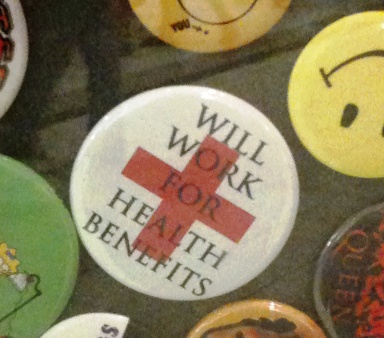McKinsey & Co is under attack because it released a survey indicating a significant number of employers will drop health benefit coverage for employees when the Affordable Care Act exchanges are available in 2014. The study’s conclusions are not consistent with administration or CBO projections (especially related cost projections).
Will employers make such a move, is it beyond their power or will? Well, doubters should look at what employers have done in the past in the name of saving money and preserving earnings.

Is this what TR meant by a square deal?
Retiree health benefits have been capped or eliminated, retiree spousal coverage has been dropped, employees have been shifted into high deductible plans, pension plans frozen, 401k matches stopped and much more. In other words, when it comes to meeting shareholders expectations, commitments to employees are an easy target and a low priority.
Consider the 100-year-old company with a pension plan in effect since 1911. Even during the great depression it maintained its pension plan trimming pay and pensions by 10% and reinstating both cuts after three years. The twenty-first century is a different world. Employees of this company who still have the pension benefit are told their promised benefit will be frozen and future benefits will accrue under a new less generous formula. So, a 55-year-old trying to plan a future retirement suddenly finds the pension to be several thousand dollars a year less than expected.
According to the Employee Benefits Research Institute: EMPLOYMENT-BASED COVERAGE REMAINS DOMINANT SOURCE OF HEALTH COVERAGE, BUT CONTINUES TO ERODE: Employment-based health benefits remain the most common form of health coverage in the United States. In 2009, 59 percent of the nonelderly population had employment-based health benefits, down from 68.4 percent in 2000.
Legally of course there is no obligation for an employer to continue these benefits. However, employers conveniently forget that future benefits are part of total compensation over an employees career. Employees paid for these benefit promises through lower cash wages, a point employers have no trouble pointing out when promoting the value of the compensation package.
How is cutting the pension a worker ten years from retirement is counting on any different from telling an executive the stock options he received nine years ago as part of his total compensation now must be forfeited? Answer, one happens and one doesn’t.
Employers have a right and obligation to manage costs and to assure that promises made can be kept. Sometimes that means changing those obligations for new hires to begin a lower cost structure, it always means keeping a reasonable level of total compensation costs, but it should not mean changing the deal for long-term employees who have little time to adjust and had every reason to believe they could rely on that portion of their total compensation that was earned over ten, twenty or thirty years.
So, do you still think employers faced with ever escalating health insurance costs will pass up the opportunity to save thousands of dollars per employee by putting them in exchanges?
Let me also blow up the myth held by many economists and other experts that employers will feel any obligation to make up lost benefits with higher wages. Those savings have and will continue to go to the bottom line.
[Note: someone is going to say, ok, how is this any different from what the states are attempting to do to their workers, you support those changes. Yes, I do because those benefits have been mismanaged and abused for decades, they are consistently well above the competitive market and unlike private employers, including in the example above, states have not attempted to manage their costs over the years and rather took little or no action until a crisis was born.]
-
More employers will drop health insurance following a trend in retirement benefits (quinnscommentary.com)
-
(constitutionclub.org)
-
The Methodology Behind the McKinsey Health-Law Survey (blogs.wsj.com)












Recent Comments